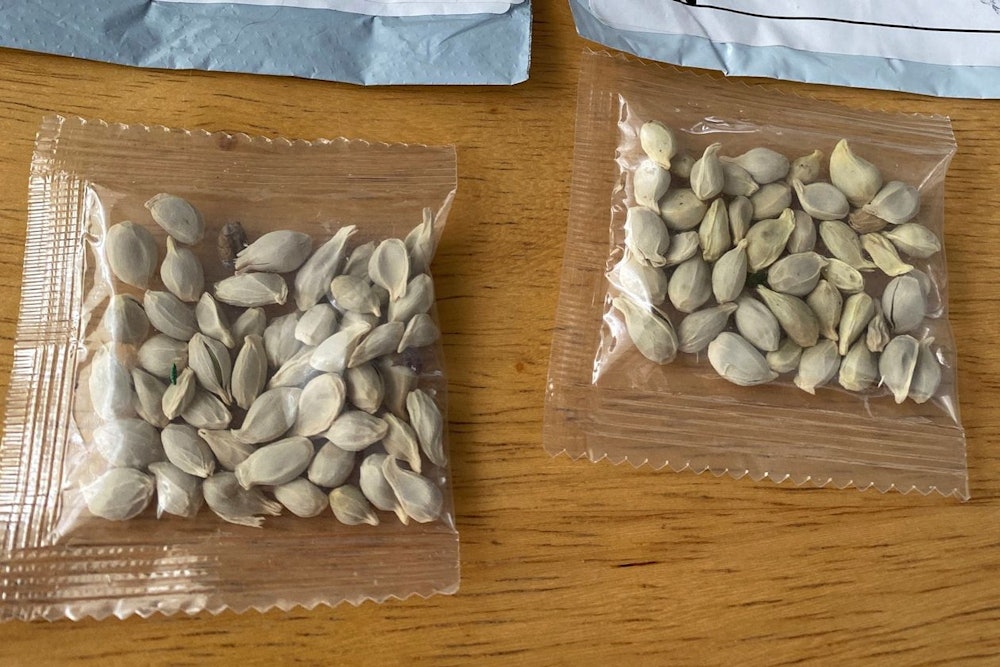- What is the Amazon Brushing Scam?
- Examples of the Amazon Brushing Scam
- How to Protect Yourself From Brushing Scams
- Fallen Victim to an Amazon Brushing Scam?
- Frequently Asked Questions
CNN Business reports that the likelihood that a consumer will buy a product with five reviews is 270% higher than a product with zero reviews, according to a 2017 report by Northwestern University's Spiegel Research Center. Looking at these stats, it's no wonder that Amazon brushing scams—scammers posting fake positive reviews on products—have become more common.
What is the Amazon Brushing Scam?
The Amazon brushing scam happens when you receive unsolicited packages in the mail. Amazon prohibits sellers from sending unsolicited packages, but they may occasionally slip through the cracks.
In these instances, sellers create a fake shopper account associated with your consumer data—such as a name and mailing address. Then, they’ll purchase the product from their store and send it to you.
In doing so, brushing scammers can make you a verified buyer and write glowing online reviews for their product on Amazon posing as you. This, then, tricks consumers into buying the product under false pretenses.
You Receive a Package from Amazon
The first sign of an Amazon delivery scam occurs when you receive a single box or multiple boxes of Amazon merchandise you didn’t order, which may not include a return address. If you receive such a package, Amazon suggests checking with your friends and family to make sure it wasn’t a gift. You can also contact customer service to confirm it's not a gift to you.
You Peek at the Items in the Package
Chances are your curiosity will get the best of you, and you’ll want to know what’s inside the package. The items in the package are typically lightweight and inexpensive to ship. Examples include, but are not limited to:
- Bluetooth speaker
- Bug Zapper
- Computer vacuum cleaner
- Empty velvet jewelry pouch
- Face masks
- Flashlight
- Handwarmer
- Humidifier
- Ping pong balls
- Seeds
You Can Dispose Of, Donate, or Keep the Items
Amazon doesn’t require you to return the items in question. You can dispose of or donate the item, whichever is most convenient for you. Additionally, federal laws prohibit people from sending you merchandise you didn't order and charging you for it.
A Fake Review of the Product is Posted
Unless you take the initiative to find the product on Amazon and look through the reviews, that's usually the extent of the scam. All the scammer is trying to do is generate fake positive reviews for the product. If you find the product on Amazon, you'll likely find a glowing review posted by someone with the same name as you.
In some cases, scammers may have your username and password, which means your Amazon account could be compromised, and they could be posting fake reviews from your real account.

- Thousands of brands, millions of products
- Free shipping on millions of items
- Free One-Day delivery with Amazon Prime, available coast to coast
Examples of the Amazon Brushing Scam
The most recent brushing scam occurred when Americans received mysterious envelopes full of unlabeled seeds from China.
Scammers may mail items to consumers with U.S. mailing addresses without their consent as a means to create fraudulent verified reviews of their products.
How to Protect Yourself From Brushing Scams
There are a few ways you can go about protecting information online, so you don't fall victim to an Amazon brushing scam:
- Create separate passwords for each account, incorporating a mix of capital and lowercase letters and special characters. You could also download a password management tool.
- Regularly update your privacy settings on social media accounts, so you don't inadvertently share personal information with the public. Avoid using social media credentials to log into other sites.
- Do some spring cleaning with your online accounts. You’ll want to close any account you no longer use. Examples might include former email addresses or social media accounts.
- Avoid getting caught in a phishing scam. Scammers are constantly trying to deceive people into sharing personal data. Don’t click any suspicious links or share passwords or personal data.
Why You Should Care About Amazon Brushing Scams
While receiving free items might not seem like a big deal, the Federal Trade Commission and cybersecurity experts warn consumers about brushing scams.
Why? The scammer obtained your mailing address. They may have received your personal information from a data breach, meaning you, along with others, are at risk. Further, there’s no way to tell what other information may be compromised. They could have your social security number, bank account information, or passwords.
Scammers can use your data in several ways. They could access and drain your bank account. They could access your credit card portal and rack up charges. If they have your social security number, they could create a fake identity in your name. They could use your information to apply for loans or credit cards—this is why you must be cognizant and take action if you’re a victim of a brushing scam.
Fallen Victim to an Amazon Brushing Scam?
If you've received a package from Amazon that you didn't order, the first step you should take is to check that someone hasn't sent it to you as a gift—the last thing you want to do is throw away a gift!
If you can confirm it was sent to you as part of a brushing scam, you should:
- Report it to Amazon
- Change your passwords
- Check your bank and credit card accounts
Report the Brushing Scam
If you've fallen victim to a brushing scam, report it to Amazon so that the scammer can be reprimanded. You can reach Amazon’s customer service line using Amazon’s chatbot.
Amazon
Contact page: https://www.amazon.com/gp/help/contact-us/general-questions.html?skip=true
It's important to verify links and contact details to beat imposters.
If you decide to use the chatbot, write, “I received an item I didn’t buy.” The chatbot may ask you to click on the item in question. If you don’t see it, you can respond with “item not on the list” or “as an associate.” You have the option to get help through chat or have an associate call you directly. Both of these options will connect you with a human associate who can assist with reporting the scam.
Change Your Passwords
Since you don’t know what personal information has been compromised, it's best to change your passwords. You don’t want scammers to have access to your online accounts. Be vigilant and change passwords for your credit card, banking, streaming, and other online accounts. Yes, this may take some time, but it’ll save you from stolen money or your identity.
Check Your Bank Accounts
Then, you’ll want to check your credit card and bank account statements. Make sure you don’t see any suspicious activity. If you notice anything suspicious, such as large purchases or withdrawals, contact your provider immediately. You could also request new cards for peace of mind.


Comments